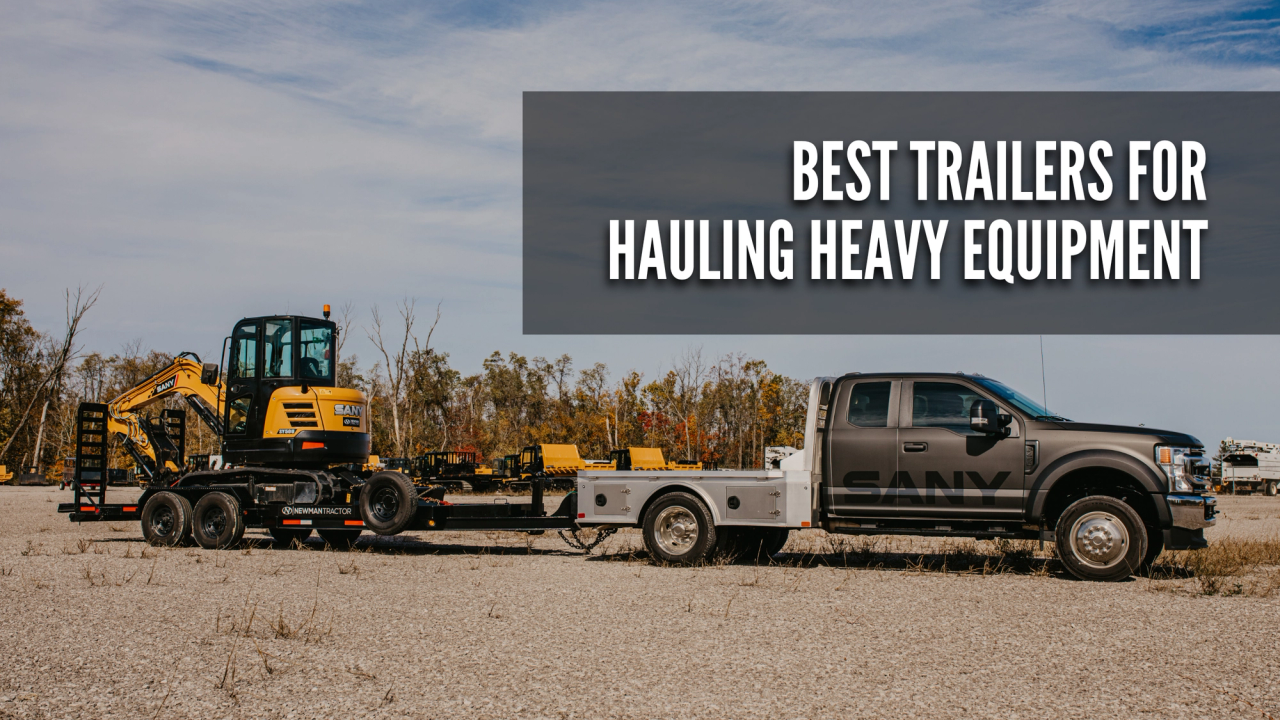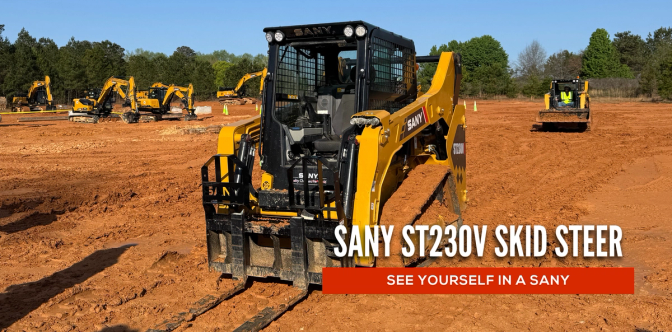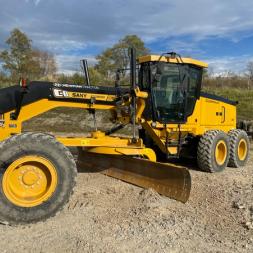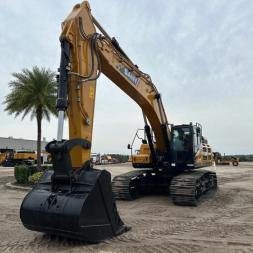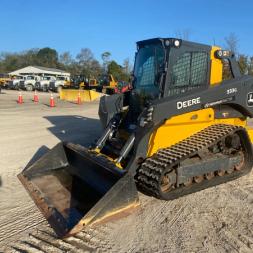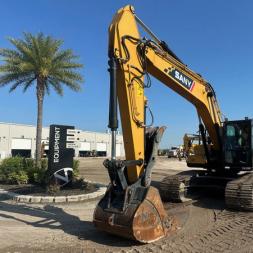Types of Trailers for
Heavy Equipment Hauling
Flatbed Trailers
Low-Profile Flatbeds
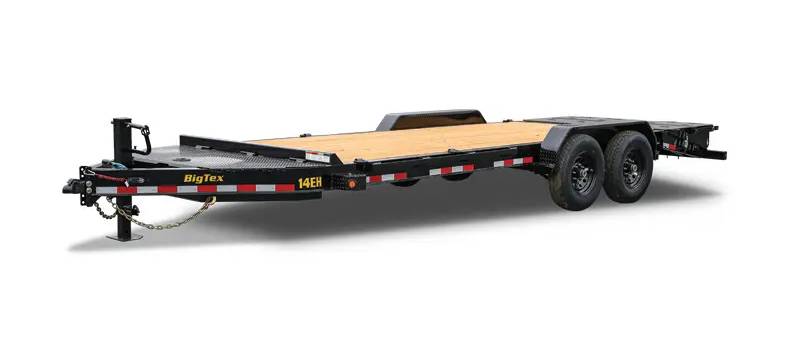
“With a low profile, you're going to have less space between your tires compared to a Deckover. Most of them measure six feet nine inches in the wheel well, which should work for the majority of skid loaders, especially if they're on tracks or mini excavators. Occasionally, if you've got a bigger skid loader with a bigger bucket, you might run into an issue putting your bucket between the tires. However, you can always back it on and position yourself where your bucket would sit more behind them, avoiding the issue.” - Chad, Excavation Revelation
Deckover Flatbeds
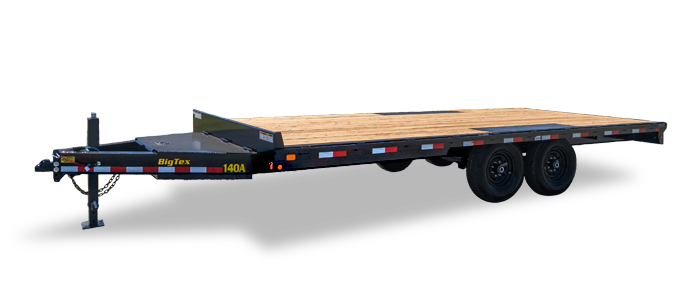
Step Deck Trailers
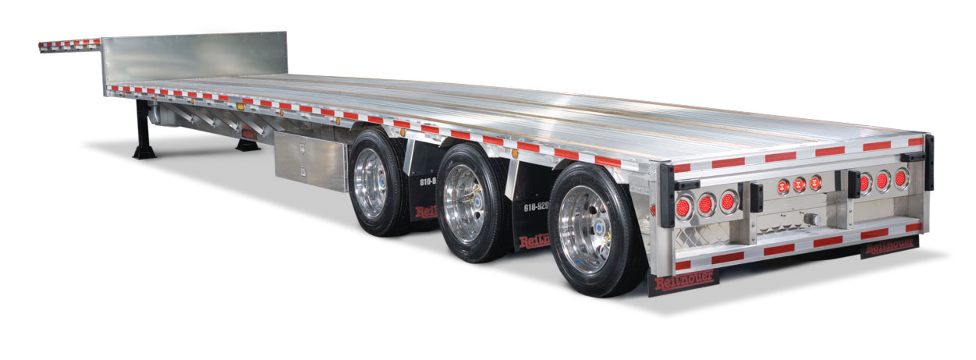
Double Drop Deck, Lowboy, and
Removable Gooseneck Trailers
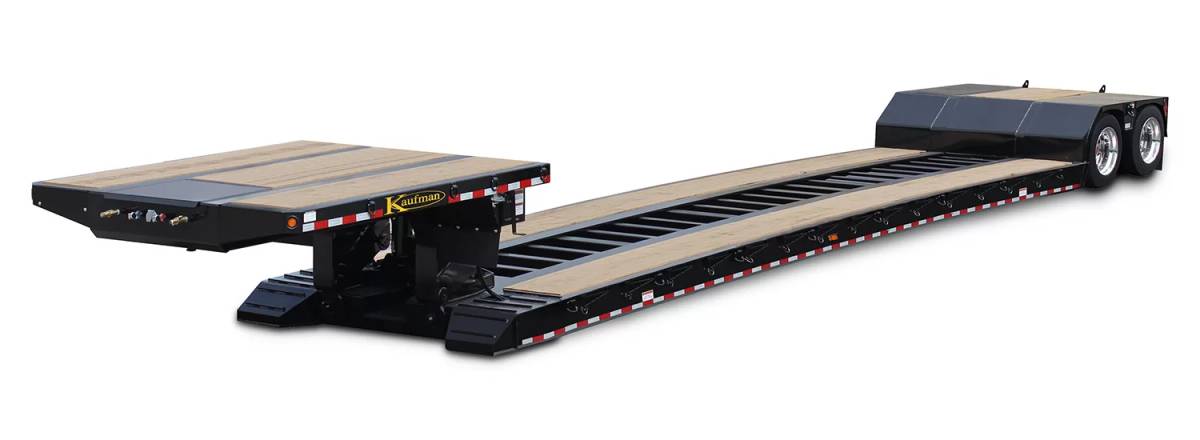
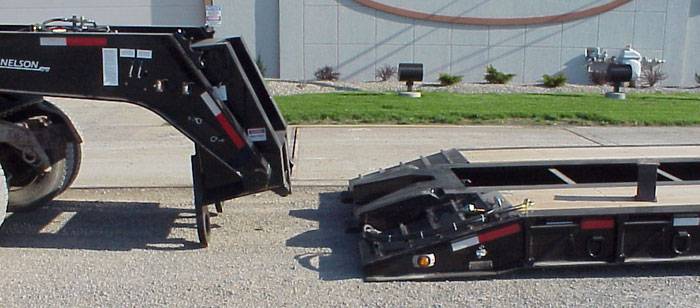
Landoll Traveling Axle Tilt Trailers

Gooseneck vs. Bumper Pull
Bumper Pull Trailers
Gooseneck Trailers
| Feature | Gooseneck Trailers | Bumper Pull Trailers | Removable Gooseneck Trailers |
|---|---|---|---|
| Hitching Point | Mounted in the bed of a pickup truck, over the rear axle. | Attached at the bumper level of a towing vehicle. | Detachable front allows for driving equipment onto the deck. |
| Load Capacity | Higher load capacity, suitable for heavy-duty applications. | Lower load capacity, suited for lighter, less frequent loads. | Very high load capacity, ideal for very heavy equipment. |
| Vehicle Requirement | Requires a pickup truck with a bed-mounted hitch, may involve additional setup costs. | Compatible with a wide variety of vehicles equipped with a towing hitch; no special modifications needed. | Requires heavy-duty towing vehicles and may need setup for the detachable mechanism. |
Considerations When
Choosing a Trailer
Weight Capacity
- Check the trailer’s weight capacity so it can safely carry the specific heavy machinery without risk of damage or legal issues. Overloading a trailer can lead to dangerous driving conditions, potential damage to the equipment, and legal penalties.
- Compare the equipment's total weight to the trailer's maximum load capacity. Always allow for a margin for any additional attachments or cargo that might be added.
Size and Dimensions
- The trailer's dimensions need to accommodate the length, width, and height of the equipment being hauled. Inadequate sizing can ultimately cause damage.
- There needs to be enough space to secure the equipment, and it must not exceed the trailer’s boundary limits, which could violate transportation laws.
Towing Vehicle Requirements
- The vehicle you need to tow with will depend on the trailer type and load. For instance, larger trailers like lowboys and double drop decks generally require semi-trucks due to their weight and size needs.
- Verify that the towing vehicle has adequate towing capacity, engine strength, and braking capability to handle the weight and characteristics of the loaded trailer.
Legal Requirements
Safety Tips for Hauling
Heavy Equipment
Best Practices for Loading and Securing Equipment on Trailers
- Always ensure the equipment is centered on the trailer for balance and prevent shifting. Use loading ramps that can handle the weight of the equipment, and make sure the equipment is driven onto the trailer slowly and steadily.
- Distribute the weight evenly across the trailer to avoid overloading an axle.
- Use chains, straps, and binders rated for the equipment's weight. Secure equipment at multiple points, ideally at designated tie-down spots, so it can’t move during transport. After the initial few miles of travel, stop to check and tighten the bindings, as they may loosen.
Routine Checks and Maintenance Tips for Trailers
- Before every trip, conduct a thorough inspection of the trailer. Check for signs of wear or damage, particularly to the frame, axles, and tires. Test all lights and signals.
- Regularly check trailer tires for proper inflation and wear.
- Check brake pads, fluid levels, and connections, if applicable.
- Keep all moving parts (like hinges and couplers) well-lubricated to prevent rust and ensure smooth operation.
- Regularly clean the trailer to prevent the buildup of dirt and grime, which can hide potential issues or cause corrosion.
Ready to Haul?
| Trailer Type | Ideal for Hauling | Vehicle Requirement | Weight Capacity |
|---|---|---|---|
| Low-Profile Flatbeds | Small excavators, backhoes, skid steers | Pickup trucks or larger towing vehicles | Up to 13,000 pounds |
| Deckover Flatbeds (including Gooseneck and Bumper Pull options) | Large construction machines like backhoes, skid steers, medium-sized excavators | Heavy-duty pickups or semi-trucks for larger loads | 16,000-48,000 pounds |
| Step Deck (Drop Deck) Trailers | Taller equipment like forklifts, telehandlers, and tall construction equipment with attachments | Heavy-duty pickups and semi-trucks | Up to 48,000 pounds, more with additional axles |
| Double Drop Deck, Lowboy, and Removable Gooseneck Trailers (RGN) | Extremely heavy or tall equipment like oversized excavators, large bulldozers, heavy-duty trucks | Specialized heavy-duty towing vehicles, semi-trucks | 45,000-150,000 pounds, more than 150,000 pounds on expandable RGNs |
| Landoll Traveling Axle Tilt Trailers | Excavators, skid steers, wheel loaders, tractors, and other heavy equipment | Specialized towing vehicles with capacity for high weights | 50,000-110,000 pounds |
